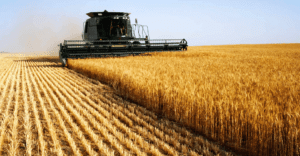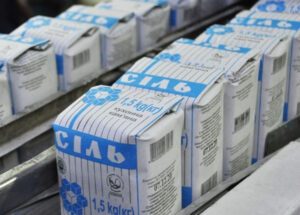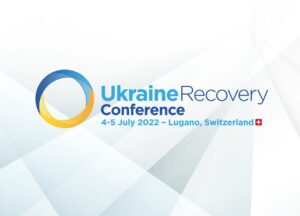
Nova Poshta Global (part of the Nova Poshta group of companies) is changing tariffs for international shipments and delivery from international online stores from July 7, the company’s press service reported on Thursday.
So, “Nova Poshta Global” extends the period of validity of the “Things from Home Abroad” service with discounts from 30% to 75%. Customers can send personal items to 25 countries in Europe, and the amount of the discount depends on the delivery zone that the country belongs to.
The tariff for the delivery of personal belongings to Poland within the framework of this service is reduced by 33%. Now the delivery of a shipment from Ukraine to Poland will be: up to 2 kg – UAH 600 instead of UAH 800, up to 10 kg – UAH 900 instead of UAH 1.2 thousand, up to 30 kg – UAH 1.5 thousand instead of UAH 2 thousand ., up to 70 kg – 3 thousand UAH.
At the same time, due to the doubling of the price of fuel, including aviation fuel, the tariff for “Global Delivery” to/from the United States is increased by 20%, from other countries and territories of the world – by 10%. So, delivery of a shipment weighing 0.5 kg from the USA will cost 840 UAH, and from another country in the world – from 1.1 thousand UAH (depending on the country).
Delivery of documents weighing up to 0.5 kg in the USA will cost UAH 720, and to another country in the world – from UAH 880.
The tariff for the delivery of items from international online stores through the NP Shopping service weighing 0.5 kg will increase by $1-2 depending on the country. The tariff for parcels from the USA increases by $2 on average in all weight categories.
Therefore, the delivery of a shipment from an online store weighing 0.5 kg will be: from the USA and England – $ 7; from Poland, Germany, Spain and France – $5; from Italy and Turkey – $6.

The Ukrainian Grain Association (UGA) increased the forecast for the harvest of grain and oilseeds in Ukraine in 2022 by 4.4% compared to the May forecast – up to 69.4 million tons from 66.5 million tons, according to the UGA website on Wednesday.
At the same time, the assessment by the association of sown areas under these crops increased by 1.6% compared to forecasts in May – up to 19.1 million hectares from 18.8 million hectares.
“Ukrainian farmers, despite the difficult wartime conditions, minefields and hostilities due to the aggressive war of the Russian Federation, continue to courageously fight for the harvest so that Ukraine has enough grain and can export part of the crop to the world market. This year, Ukraine can get 69 .4 million tons of grain and oilseeds from an area of about 19.1 million hectares,” the UGA said in a statement.
At the same time, the export of grain and oilseeds from Ukraine in the 2022/2023 marketing year (MY, July-June) can reach 31.5 million tons, subject to a significant increase in the throughput capacity of border crossings on the western borders of Ukraine. Given the current throughput capacity, Ukraine can count on the export of about 25-30 million tons of crops in the 2022/2023 marketing year that has begun.
According to the results of 2021/2022 MY, it is expected that the transitional crop balances in the country will amount to about 25.9 million tons (+0.9 million tons compared to UGA forecasts in May). In 2022/2023 MY, this figure may increase to 36.6-48 million tons due to the inability to export agricultural products at the usual pace for Ukraine. In May, the association predicted transitional balances for 2022/2023 MY at the level of 31-43 million tons.
According to UGA forecasts, in 2022, a wheat harvest is expected at the level of 20.8 million tons (+8.3% compared to the organization’s May forecast); 27.3 million tons of corn (+4.6%); 6.6 million tons of barley (forecast kept); 9 million tons of sunflower (forecast kept); 2.2 million tons of soybeans (+4.7%); 1.5 million tons of rapeseed (+13.3%).
UGA also predicts the export of wheat in 2022/2023 MY at the level of 10 million tons, corn – 10 million tons, barley – 2 million tons, sunflower – 6 million tons, soybeans – 1.8 million tons, rapeseed – 1.45 million tons.
“In general, the export of grains and oilseeds in 2022/2023 MY can be expected at the indicated level, if Ukraine, under the blockade of the Black Sea ports, can double the throughput of other logistics directions, including railway crossings at the borders with the EU countries,” the association explained in message.
At the same time, the unblocking of the Black Sea ports will greatly simplify the logistics and cost of transporting grain for export, and producers will be able to make a big profit for the grown crop in accordance with the high prices for agricultural crops that are currently prevailing on the world market. “Unblocking Ukrainian ports and ensuring the safety of navigation in the Black Sea is the only way to quickly and effectively resume Ukrainian grain exports to countries in dire need. The lack and high cost of food can cause, according to UN estimates, famine in many poor countries of the world, mass protests and riots, and as a result mass migration of people from Africa and the Middle East to the EU,” the UGA summed up in the message.
As reported with reference to the data of the State Statistics Service, in 2021 Ukraine harvested a record harvest of grain and leguminous crops in the amount of 85.7 million tons, which is 32% more than in 2020. In total, 32.07 million tons of wheat (+28.9%), 41.87 million tons of corn (+38.2%) and 9.42 million tons of barley (+23.3%) were harvested.
Ukraine in 2021 also harvested 16.38 million tons of sunflower (+25% compared to 2020), 10.8 million tons of sugar beet (+18.1%), 3.5 million tons of soybeans (+24.4%), 2.92 million tons of rapeseed and 42 thousand tons of oilseed flax (an increase of 3.7 times).
The Ukrainian Grain Association (UGA) is an association of producers, processors and large grain exporters who annually export about 90% of Ukrainian grain products.

In June, the Silpo supermarket chain recorded a fourfold increase in sales of salt, 3.5 times soda, three times vinegar, and twice as much sugar as compared to June last year, the retailer’s press service reported.
As noted in the release, the excitement for these categories of goods was caused by a chain reaction after the news about the suspension of the work of the Artemsol enterprise in the Donetsk region. In particular, despite the fact that simultaneously with the suspension of the Silpo enterprise, sufficient volumes of salt were brought to Ukraine from Poland, Romania, Turkey and Bulgaria, the demand for salt quadrupled, and the very possibility of its shortage triggered an increase in demand for other social goods.
In June, sales of soda increased by 2.5 times, which Silpo delivers mainly from Turkey.
Certain interruptions in the supply of vinegar were observed in early June. There are two large vinegar producers in Ukraine, they depend on the supply of acetic acid from abroad, but they managed to establish supplies and stabilize the situation.
The sale of sugar has doubled. The supermarket chain coped with the increased demand by increasing the supplies of Ukrainian sugar producers.
The Silpo chain, which is part of the Fozzy Group, consists of 325 supermarkets in 60 cities of Ukraine and four Le Silpo deli markets in Kyiv, Dnipro, Kharkov and Odessa.
Fozzy Group is one of the largest Ukrainian retailers with more than 690 outlets throughout the country. The company develops retail chains of various formats: Silpo supermarkets, Fozzy Cash & Carry wholesale hypermarkets, Fora convenience stores, Thrash! discounters, Bila Romashka pharmaceutical supermarkets, Ringoo personal electronics stores.
According to Opendatabot, the founder of Silpo-Food LLC is PJSC Closed Non-Diversified Venture Corporate Investment Fund Retail Capital (100%, Kyiv), Vladimir Kostelman is the ultimate beneficiary.
According to the results of January-September 2021, Silpo’s trade turnover amounted to UAH 42.1 billion. “Club of Experts” has previously analyzed the shortage of salt in Ukraine and the impact of salt on the human body. For more details, see the video on the YouTube channel of the “Club of Experts” at the link

Minister of Infrastructure of Ukraine Oleksandr Kubrakov during the forum in Lugano (Switzerland) on Tuesday, July 5, presented a number of planned projects for the development of the country’s railway export infrastructure.
According to the information in the presentation that Kubrakov presented, in particular, among the projects: construction of new and modernization of existing railway lines (both 1435 and 1520 mm) in the direction of the border with the EU and the seaports of the Danube; modernization of rolling stock for freight traffic; modernization of equipment for changing the gauge.
The total cost of these projects is $1.5 billion.

The access of producers of mineral and mountain water to glass bottles for bottling water has become much more difficult due to the shortage of glass containers throughout Europe, it was caused by the full-scale invasion of the Russian Federation into Ukraine and the subsequent reduction in its production in both countries.
In this situation, AT Market LLC (Kyiv), which is engaged in bottling high-mountain Carpathian water under the Voda UA brand, plans to start producing water in Tetrapak packaging next month, the owner and founder of the company, Dmitry Nikiforov, told Interfax-Ukraine on Tuesday.
“Now all the factories are standing, so many of our and some European manufacturers have stopped producing water in “glass”, and are limited only to plastic. We, for our part, understand that all our manufacturers will run out of bottles in the foreseeable future, and in early August we will offer the market an alternative to glass is Tetrapak eco-packaging with a volume of 0.33 liters,” Nikiforov said.
He recalled that the situation with the availability of glass containers for producers of mineral and high mountain waters remains difficult throughout Europe, because a significant part of the bottles were produced in Ukraine and Russia.
Earlier, Nikiforov said in an interview with the agency that AT Market can produce glass containers for bottling water under the Voda UA trademark only at the Vetropack plant in Gostomel (Kyiv region), since the necessary presses remained at the plant that was under Russian occupation for some time -forms. In May, the head of the company noted that the batch of bottles produced before the war on the order of AT Market was not damaged, and it could be picked up within a month.
“Unfortunately, the plant will not be launched in Gostomel. We bought the remaining bottles that survived, and that’s all for now,” Nikiforov stated.
At the same time, he stressed that the AT Market water bottling plant, located in the Ivano-Frankivsk region, is now working in two shifts.
Voda UA is a group of companies engaged in the extraction of Carpathian high-mountain waters under the trademarks Voda UA, “Goryanka”, “Karpatskaya dzherelna vysokogirna”.
DRINKING WATER, HORECA, MINERAL WATER, TETRAPAK, VODA UA, НИКИФОРОВ

On July 4, an international conference for the restoration of Ukraine started in Lugano, Switzerland. Among the main decisions taken on the first day of the conference, one can single out the approval of a plan to provide Ukraine with macro-financial assistance in the amount of $750 billion. Of this total, from 150 to 250 billion is expected to be directed to the restoration of infrastructure and housing damaged as a result of hostilities.
At the same time, the mechanisms for the practical implementation of this project remain unclear in the context of the ongoing war and the need to adapt legislation to it and establish partnerships between the state and private companies. Portal Open4business turned to Igor Stakovychenko, an expert in the field of construction and real estate, for a comment.
In his opinion, the practical implementation of the project should be started now at all levels, since delaying the process can lead to negative consequences in the autumn-winter period.
“Mechanisms for allocating funds from the confiscated assets of the Russian Federation and its large businesses are already being implemented by individual countries. We, in turn, need to implement the conversion of these financial assets into specific infrastructure and construction projects by creating representative offices in donor countries and coordination centers in Ukraine,” said Ihor Stakovychenko.
The expert also stressed that the regional principle of recovery, now promoted by the country’s leadership, when a separate partner state is engaged in projects in a separate Ukrainian region, is the most effective at this stage.
In addition, Igor Stakovychenko suggested creating a system of decentralized funding for the implementation of individual projects at the local level.
“But we must not forget about our responsibility to our partners. It is necessary not only to minimize, but to completely exclude the possibility of misuse of foreign aid by local officials. To do this, it is necessary to create a separate trust fund for each individual restoration project, the activities of which will be as transparent and controlled as possible by both the Ukrainian anti-corruption authorities and the donor country,” Ihor Stakovychenko emphasized.
According to the expert, the basis for the creation of such funds should be existing budget programs, as well as amendments to the main financial document.
“In fact, now we can receive funds both in the form of direct assistance and in the form of investments from partners. Here it is important to successfully implement and present the first major restoration projects, which will help increase investment attractiveness even in the current conditions,” added Igor Stakovychenko.
CONSTRUCTION, EXPERT, FINANCE, MARKETS, REAL ESTATE, RESTORATION_OF_UKRAINE, TECHNOLOGY, ІГОР_СТАКОВИЧЕНКО, СТАКОВИЧЕНКО